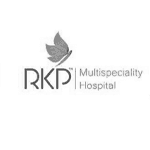Surgeries We Provide in Madurai
Know If LASIK is the Right Procedure For You
Steps Prior to the LASIK Procedure
Recommendations after LASIK Surgery
The Approach to LASIK Surgery by Mykare Health
LASIK Surgery: The most popular and well-known laser refractive procedure for treating vision issues is called LASIK. LASIK, also known as laser-assisted in situ keratomileusis, is an alternative to glasses or contact lenses. A specialised cutting laser is used during LASIK surgery to accurately alter the shape of the cornea, the dome-shaped transparent tissue at the front of the eye, to enhance vision.
PRK: The top layer (epithelium) is scraped away during PRK (Photorefractive keratectomy) rather than forming a flap. It takes three to four days for this corneal abrasion to heal, which causes moderate temporary pain and blurred vision. The theoretical benefit that PRK offered for individuals who are more likely to be struck in the eye was believed to outweigh these disadvantages. Additionally, LASIK surgery is a preferable choice over PRK for treating more severe nearsightedness (myopia).
Femto LASIK: Femto LASIK surgery, also known as "Femtosecond-assisted laser in-situ keratomileusis) surgery, is a form of laser eye surgery. This technique is used to restructure the cornea of the eye in an effort to treat visual issues, along with other refractory operations.
LASIK vs PRK
Refractive eye surgery includes procedures like LASIK and PRK. Astigmatism, nearsightedness, and farsightedness are conditions that they cure. The cornea, the transparent outer layer of your eye that focuses light so you can see well, is reshaped with a laser in both LASIK and PRK. However, they go about it a little bit differently. LASIK surgery makes a little flap of tissue in the cornea. The cornea's outer layer is removed during PRK, although it eventually regrows. Both methods have benefits and drawbacks. Find out from your eye specialist which procedure suits you best.
















































